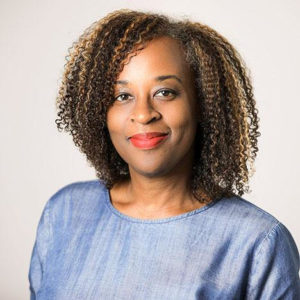I’ve been an empty nester since the pandemic began — happily free of the burden of managing children’s virtual learning along with all the other stressors of COVID19 life — but almost everyday I’ve thought about what I would be doing if my children were still in school. My children were hardly model students; one of my sons loved school, but didn’t care much about demonstrating his mastery of subject matter to educators. My other son was like his mother, squarely among the educationally wayward, so his first day of school to his last was a harrowing roller coaster ride for all the adults around him.
With these truths, my professional background in education, and my lifelong history of activism in mind, I came up with a playbook of 4 key moves that feel honest and true to what I would be doing if my kids were in public schools today:
- Lock arms with educators. I’d view teachers and parents as being on either side of the same coin because, frankly, they are. As a former K-12 teacher who has worked with K-12 teachers since leaving the classroom, I know that they didn’t join an intellectually-demanding, high-touch profession to teach from their kitchen table through a blue dot on a computer screen. And as I hear my friends discuss their own limitations of content knowledge, patience and skill, I know that parents want children back in schools with professional educators just as much as teachers want those children to return to their classrooms. Understanding that zero risk during a pandemic is an impossibility and recognizing parents’ and teachers’ inherent creativity, I would work to form a parent-teacher coalition to help steer a back-to-classroom conversation together, rooted in the realm of urgency, proper resource allocation, reasonableness, and optimal safety.
- Spy on my children’s classes. I hold degrees in child development and educational leadership so I know what developmentally sound practice looks like for kids but, selfishly speaking as a regular mom during a pandemic, I would care about classes keeping my children engaged because that’s what I would need in order to work relatively undisturbed at home. I would check to see breakout discussion rooms, use of Zoom reaction buttons on screens, real-time student writing on interactive boards, and anything else that would foster students’ ability to build on each other’s ideas and energies in a virtual space. With teachers having been thrust so unexpectedly into online instruction, it would be a lot to ask for, so I would hope that school administrators would support them well to foster this, but if they weren’t doing that I would unapologetically insist that they do.
- Challenge the state and district to fulfil their commitments to schools. As a mother of Black sons who matriculated through New Jersey’s public schools, I know that much of pre-pandemic schooling didn’t match up with their needs so with instructional delivery now sharply disrupted, there would be no better moment to pursue change. Here, I’d start with the low-hanging fruit. For nearly twenty years, New Jersey’s Amistad Commission has been in effect, by law. Its mandate “ensures that the Department of Education and public schools of New Jersey identify materials and texts which integratethe history and contributions of African-Americans and the descendants of the African diaspora.” Despite this clear, legally-bound charge, Black and white students across New Jersey attest that the contributions of African Americans have been neither consistently nor meaningfully infused in their classes.
Governor Murphy is backing new legislation to amplify the accountability and reach of the Amistad Commission. This is good news, especially when one considers that 94% of Black voters gave the Governor their vote but the New Jersey Department of Education has long been lax in monitoring the Commission, even with the power it currently has. My children attended school in the liberal enclave of Montclair, where voices proclaim that Black Lives Matter, yet even with an active teachers union and a vocal parent body, the Amistad Commission’s impact there remains a dream deferred. I’d challenge both the state and district to ramp up guidance and resources for deep reading and project-based learning opportunities to infuse the African American experience in the curriculum, and reduce some of the face-time teachers and students would have to devote to a screen. I’d then ask that any extra time freed up for educators and curriculum specialists be devoted to curricular overhauls, supports and tweaks to comply with the Amistad legislation and broaden every New Jersey student’s understanding of their shared history.
4. Make the state and district show me the money. If I was supervising my childrens’ learning at home, I would need extra money to augment their learning environment and as a former public school leader and state education executive, I know that there is a per-pupil-allocation of thousands of dollars to the district for the education of each child enrolled. I would demand scrutiny of the public coffers to see where funds earmarked for my child’s education could be used to provide me with a direct educational stipend to navigate at-home learning. The activist mom in me would lead me to attend the state and district educational board meetings to request pandemic parenting stipends, using my best Rihanna voice to ask that they “…pay me what you owe me and don’t act like you forgot!”.
The truth is, the judicious use of public school dollars to improve Black lives is the closest thing to reparations most Black folks will ever receive, but the opposite of that scenario is actually not neutral, it’s detrimental. I’m keenly aware of this in Black History Month and with an ongoing COVID reality when more African Americans are losing their jobs than other workers and 40% of Black businesses have shuttered. That’s why if I had school-aged children, and the current education landscape was unresponsive to my family’s needs, I’d hedge my bets elsewhere – on abundant online curricula, free teaching resources and parent pods instead. It wouldn’t be my first or second choice, but an option nonetheless. And this option would have a silver lining – with my sons already at home, withdrawing from school to be fully under my tutelage wouldn’t even require them cleaning out their lockers or desks.



